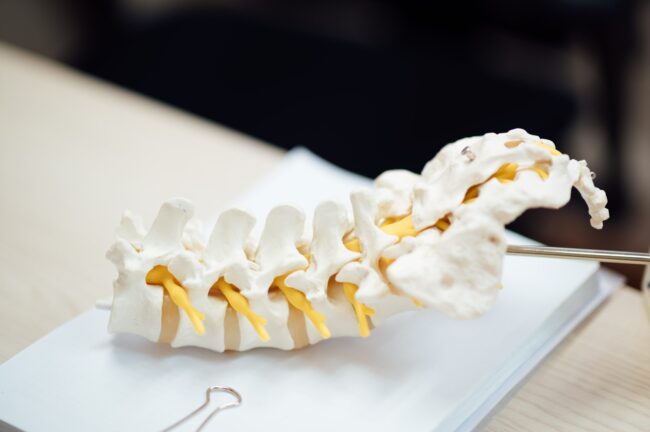If you have read any of the articles on this website or anything relative to modern thiamine deficiency, you are aware of the connection between sugar consumption and thiamine deficiency. The more sugar, in any form, that one consumes, the more thiamine one needs to process it. This is because thiamine is the rate-limiting step in the metabolism of glucose into ATP. This pathway can be overwhelmed easily by the high sugar and low nutrient content of modern foods. The mismatch becomes particularly evident during pregnancy, where increased energetic demands may lead to insufficient thiamine independently of sugar intake if one is not careful, but also may be compounded by sugar intake. A study published in 1969 looking at thiamine and pre-eclampsia elegantly illustrates this point. Pre-eclamptic women, it appears, have a problem with sugar metabolism and the logjam is insufficient thiamine.
Pre-eclampsia
Pre-eclampsia, which affects up to 6% of all pregnancies, is marked by dangerously high blood pressure, edema, proteinuria with kidney damage and potentially damage to other organs. There is a high risk of stroke and other serious, even fatal complications, for the mom. For the fetus, because of the impaired functioning of the placenta, placental abruption is possible along with growth restriction and pre-term birth. There are few useful treatments, beyond bedrest and early delivery, but even then mom’s health may continue to be at risk. Postpartum spikes in blood pressure, called postpartum pre-eclampsia, affect up to 27% of women. As bad as these numbers are, they are likely even worse, given that most women are seen in the emergency rooms where the association with pregnancy is not regularly tabulated.
Metabolic Disturbances, Thiamine, and Pre-eclampsia
Pre-eclampsia has long been associated with metabolic derangements leading to poor energy metabolism of the placenta and mom alike. Although some have considered the role of thiamine in pre-eclampsia, the research has been mixed, generally decades old involving non-Western populations where food insecurity and not excess drives deficiency. In all, the research is sparse at best.
Although this particular study is older, its unique design merits discussion. Specifically, it shows that the activity of a thiamine-dependent enzyme that is responsible for a key aspect of the metabolism of glucose into ATP is impaired or overwhelmed in women with pre-eclampsia. This impairment then, leads to both maternal and placental energy deficits, which in turn, result in poor maternal kidney and cardio-metabolic function and all of the negative sequelae associated with pre-eclampsia.
Depending upon the severity of the impairment though, the problems with thiamine and subsequently glucose metabolism may not be noticeable unless challenged. That is, early on in the disease process, despite symptoms of pre-eclampsia, the metabolic dysfunction associated with insufficient thiamine are hidden with typical testing. It is not until the patient either faces a metabolic challenge, such as the one devised by the study below, and/or the disease has progressed sufficiently in severity that the thiamine issues may be detected.
Study Details
Backing up just a bit, let us look at this study more closely. Here, three groups of pregnant women were recruited: a healthy control group, a mild pre-eclampsia group (BP >160/100, plus edema and albuminuria) and a hospitalized eclampsia group. Instead of measuring thiamine directly, which has a high rate of false negatives, the researchers devised a challenge test wherein blood pyruvic acid concentrations were measured fasted and then 30 minutes following the administrations of dextrose.
Recall, thiamine is required for pyruvate dehydrogenase (PDH), the gatekeeper enzyme within the mitochondria, responsible for taking pyruvate (derived from glucose) and converting it into acetyl CoA, so that after a series of reactions, ATP can be produced. This pathway is called oxidative phosphorylation or OXPHOS, because the reactions require oxygen. With OXPHOS and sufficient thiamine, for every molecule of glucose, the mitochondria synthesize 30-38 units of ATP. This is compared to only 2 units of ATP produced via glycolysis, the intracellular pathway that converts glucose into pyruvate.
Pyruvate or in this case, pyruvic acid, is inversely associated with thiamine concentrations such that when thiamine is sufficient, pyruvic acid concentrations are low, even in response to the ingestion of sugars. When thiamine is low, however, pyruvic acid skyrockets. This means that a higher than expected pyruvic acid in response to the ingestion of dietary carbs or in this case dextrose, would indicate a logjam at the PDH, likely associated with low thiamine. Since the PDH enzyme also utilizes riboflavin and lipoic acid, it is possible that these nutrients may also be involved. Similarly, if any of these nutrients are severely low or this enzyme is more completely overwhelmed, we would expect to see elevated pyruvic acid even when fasted and even higher concentrations after the dextrose challenge. And that is exactly what these researchers found.
Compared to the healthy group, fasting pyruvic was similar but increased significantly after the dextrose challenge in the less severe pre-eclampsia group. For the hospitalized eclampsia group, however, both fasting and challenge pyruvic concentrations were elevated significantly. The healthy range for pyruvic acid is .5mg-1mg. Pyruvic concentrations in pre-eclampsia fell within the range while fasted but their numbers shot up, in some cases over 2mg. The average was 1.62 (SD .4). For the hospitalized group, pyruvic was elevated both when fasted (r=1.05mg) but especially with the dextrose challenge (r=1.93mg, SD .26).
Whoa.
Let’s put this in context. We use sugars (and fats, but that is another story) to make ATP. ATP is the energy currency produced by the mitochondria and used by all of the cells to do the things they need to do. Not enough ATP means not enough energy. Imagine trying to grow a new organ like the placenta and a new human without sufficient ATP. It just will not work out very well. Something will have to give. In this case, maternal kidney and heart function suffer. Both require huge amounts of ATP.
Getting pyruvate though PDH is the rate-limiting step. If the PDH does not have its cofactor nutrients, it will not work well and if it is not working, not much else will either. I should note that there are several other thiamine dependent enzymes in this and other pathways that control the metabolism of fats and proteins as well.
So, if pyruvate cannot get into the mitochondria and be worked on by the PDH, not only will ATP production decline and pyruvic build up at the gates of the mitochondria, but in an effort to rid the body of the excess pyruvate, some of it will be transported to another enzyme called lactate dehydrogenase or LDH. LDH and PDH work together to generate back up energy by converting pyruvate to lactate and back again. If one is healthy, lactate can be used as a fuel source and fed back into the mitochondria but only if one has sufficient thiamine to run the PDH. If thiamine is lacking, all of that pyruvate and lactate build up and that is what we see here. The PDH is not working well and so concentrations of pyruvic acid and likely lactic acid, though not measured, increased especially in the presence of a dextrose challenge and as the disease processes progresses in severity.
Final Thoughts
What this study tells us is that there is problem in this pathway that may not be readily apparent biochemically unless stressed appropriately, in this case, with dextrose but I imagine any high carbohydrate diet might produce the same reaction. And since, thiamine is involved in other metabolic pathways, I suspect had the researchers devised challenges to test them as well, we would likely have seen a similar pattern. While this study looked at pregnant women specifically, this pattern holds across all populations. The body adapts for as long as it can, but the chinks in the system are there. We simply do measure them appropriately in the early stages of disease – with challenge tests.
We Need Your Help
More people than ever are reading Hormones Matter, a testament to the need for independent voices in health and medicine. We are not funded and accept limited advertising. Unlike many health sites, we don’t force you to purchase a subscription. We believe health information should be open to all. If you read Hormones Matter, like it, please help support it. Contribute now.
Yes, I would like to support Hormones Matter.
Photo by David Travis on Unsplash.














